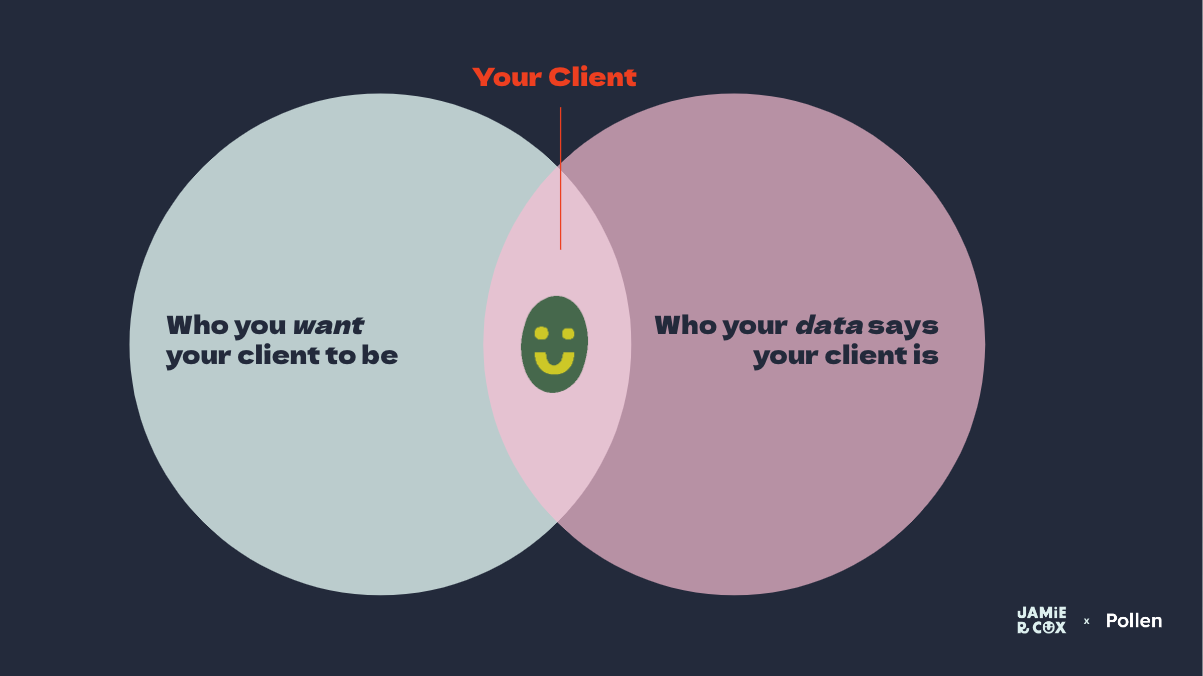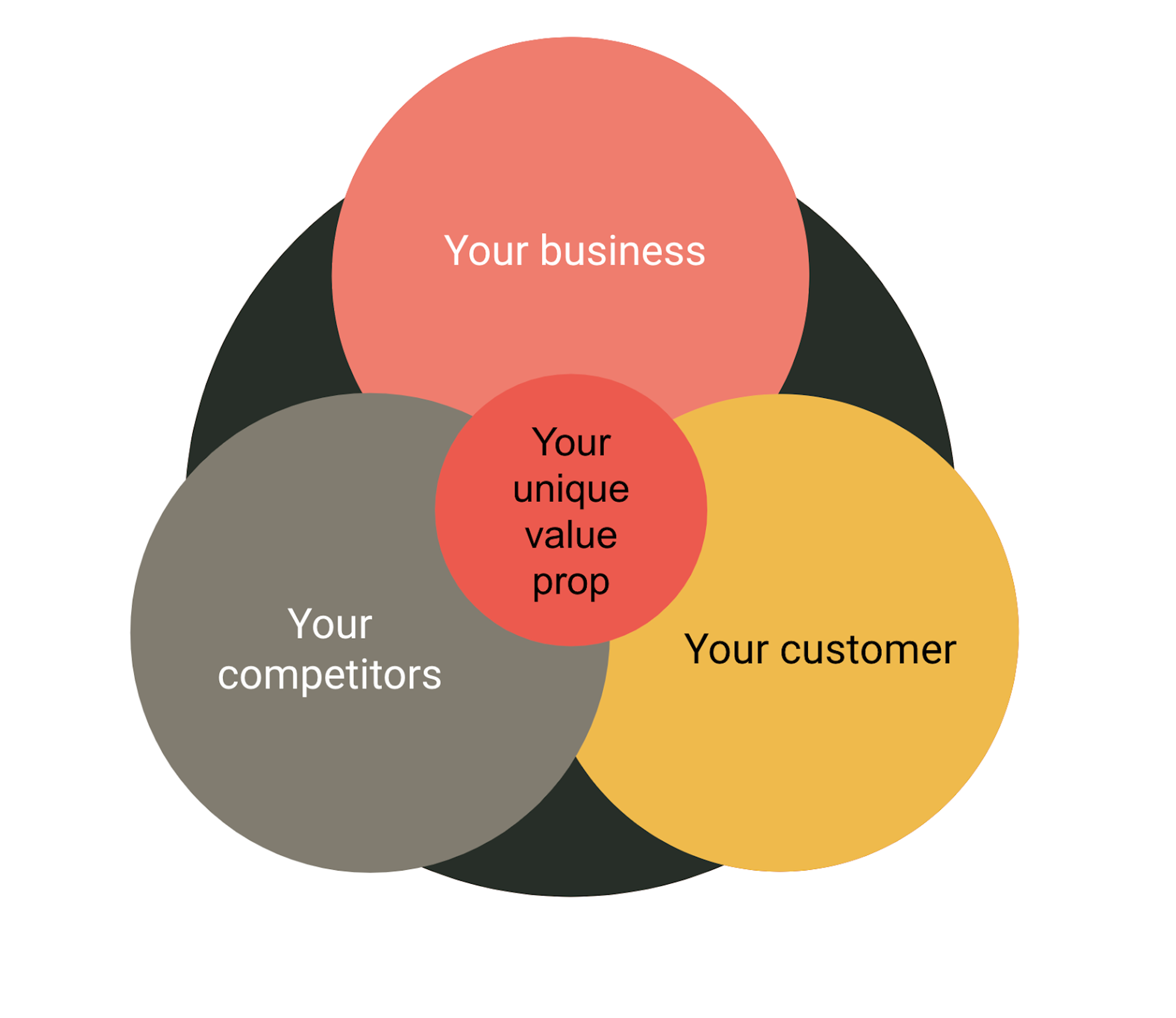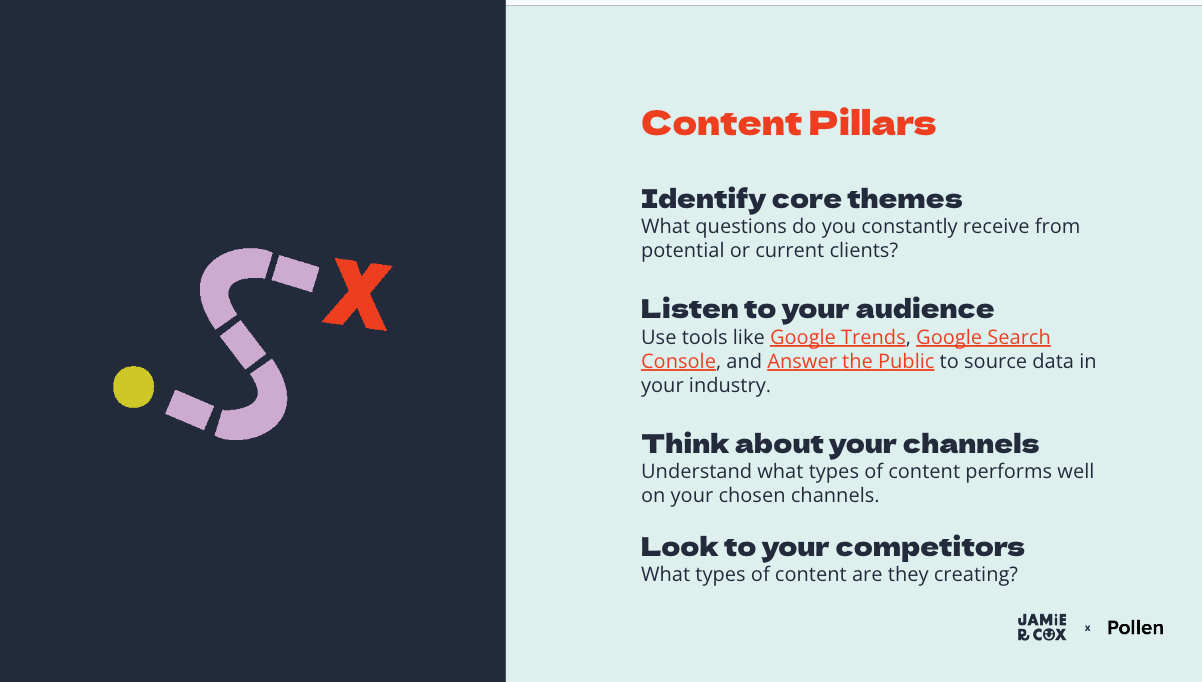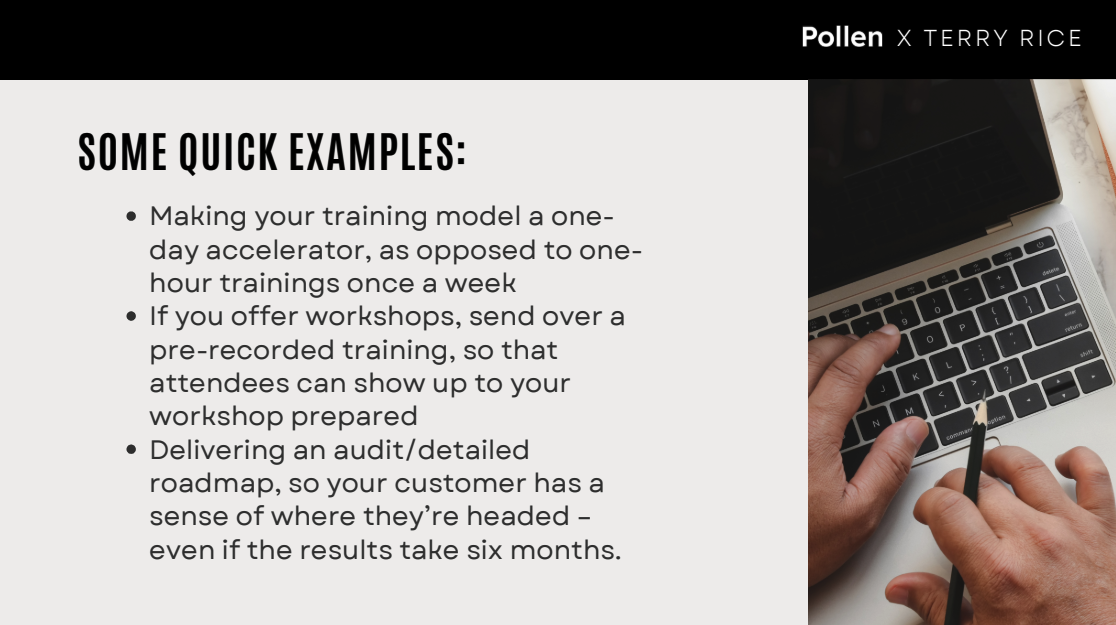Build a Customer Persona
Without a clear understanding of your target customer, you risk building a brand on shaky ground. Without this understanding, it’s difficult to express what you do in a way that excites prospective customers—ultimately impacting lead generation.
Customer personas are a way to refine your connection with your clients to more effectively demonstrate, “I see you, I hear you, and I’m here to help.” When you understand who your audience is, what they want, what they need, and their goals, you can show up at the right time with the solutions they need.
You might have an ideal client persona in your head—someone you might love to work with, with a predictable set of problems that map up to your services. They know exactly what they’re looking for, are ready to buy right now, and are actively searching for someone like you.
In reality, it’s really hard to fit a person into a box you’ve created. Every client is not your dream client – that’s just the reality of this work. While having a dream client in mind is great, you need to look at the data to understand who your client is and find the magic space in between.
If you’ve already worked with some clients, you have some historical data to get started on this. If you’re really starting from scratch, reworking your existing audience, or opening a new audience, the next step will give you some tips on gathering this data. I’ll share my own brand strategy work to show what this looks like in practice. For example, I want my client to understand that a brand is not just a logo. But in reality, clients come to me for a logo, and I have to educate them about why that is not really what they need.
I’ll share my own brand strategy work to show what this looks like in practice. For example, I want my client to understand that a brand is not just a logo. But in reality, clients come to me for a logo, and I have to educate them about why that is not really what they need.
I also want my clients to start a business brand with a clean slate and no preconceived notions about what a brand is or its rules. But usually, my clients have DIY’d their business for a few years and might be holding on to some ideas that no longer serve them.
Ask reflection questions
Here are some reflective questions that will help you reveal the deeper layer of your client’s mind and understand where their attention and money are going.
- What do you hope your customers experience when they work with you?
- What are your customers’ expectations of your offer?
- What specific language would your customer use to describe the problem you solve?
- How has your customer tried to solve this problem in the past?
- What are some of the daily challenges in their business?
- How will your client measure the success of your work? What does a great experience look like for them?
- What is your client’s long-term vision? And how do you figure out how to fit your work into that picture?
- Who aren’t you for?
It's time to create the persona. Based on your research, develop a short paragraph or bullet points that help you vividly picture a specific person. Include details like:
- Who they are
- Where they might live
- Their role within a business
- The goals they have in their business
- The context that they’re working from
- What their obstacles are
- Their interests
Use an actual photo of someone to make it feel more human and real. This is something you’ll come back to when developing other parts of your brand and will be very convenient if you choose to work with a designer, brand strategist, coach, or another service provider who needs to ramp up on your customer base quickly.
I’ve included the background for one of my target persons, the Static Solopreneur, below as an example from my own business.
Psychographics are better than demographics
Demographics are great—you want to know if your millennial jokes will hit. But what you’re really looking for is to make an emotional connection with your client. This is why I recommend focusing more on psychographics, including what people want and how you can make them feel understood.
Focus on decision-makers, not companies
Even if you’re working for a company, you need to convince a real person at that company that they need your services. To that end, get as nitty gritty as possible with specific people, not companies. Figure out who the decision-maker is within those companies you need to get a yes from.
When you do this, you still won’t lose sight of what’s important to that company because company and decision-maker goals go hand in hand. What you’ll lose, though, if you only focus on the company is the emotional connection you must make with a real person.
Whether you’re starting from scratch or reworking your existing audience, gathering real data about your potential customers is important. User research and customer discovery are essential to good business and brand strategy.
| | || ---------- | ---------- || Listen | Keep your ear to the ground on what people are talking about, their questions, and their needs. An easy way to do this is by joining different industry communities and following research from top tools. For example, I’m in a ton of startup Slack groups and entrepreneur communities, just listening and gathering intel on what people are asking for, what they’re working on, and what language they’re using. You can also follow research from well-known platforms depending on your vertical, such as Hubspot for marketers. || Ask | Get nosy and curious about other people’s problems. Talk to people and learn about what problems they face and what an ideal scenario would be for them. For example, say you offer organizational change management to HR teams. Reach out to some HR professionals and say, “Hey, I’m building something, and I’d love to ask you a few questions.” This is not a sales pitch, so come prepared for that conversation with things you want to learn. || Look | Study your competitors' portfolios, especially if you’re just starting out, to understand who their clients are, how they serve them, and what language they’re using. You can also look at open job descriptions at your target client companies to see what problems are a priority for them, what skill sets they’re looking for, and how they’re describing them. |
| | || ---------- | ---------- || Pain Points | Pain points are their frustrations with their own business. It could result from their industry, skillset, mindset, financial constraints, etc. They can be aware of these pain points or not. || Misunderstandings | Misunderstandings are the wrong assumptions they may have about your area of expertise. These are the places where you will need to do some work to educate them. || Best-fit services | Best-fit services are the offerings you provide that would be appropriate and helpful for this person. |
 We walked through one example of the Static Entrepreneur, but she is not the only persona I target, and you may also serve multiple personas. While you don’t want to develop too many customer personas because you risk overfitting your marketing and sales efforts, develop as many as you need to identify the distinct problems they need solved or different buying behaviors. You may end up with one, two, or three.
We walked through one example of the Static Entrepreneur, but she is not the only persona I target, and you may also serve multiple personas. While you don’t want to develop too many customer personas because you risk overfitting your marketing and sales efforts, develop as many as you need to identify the distinct problems they need solved or different buying behaviors. You may end up with one, two, or three.
Get specific on their wants and needs
| | || ---------- | ---------- || Wants | Wants are what the client thinks the problem is or what they want to do. In my brand strategy work, this is often a logo. Clients often express what they want, and it’s your job to uncover the needs behind them and represent the work that you can do. || Needs | Needs are the unseen pieces that will actually solve the problem they’re talking about. During the sales process, it’s your job to actively listen to their stated wants and translate them into needs that you can help them with. |
Returning to the Static Solopreneur, she wants to break through her revenue plateau, expand her client base, and have a brand identity aligned with her voice and style.
But it’s different when I get curious and probe deeper into what they actually need:
- Can they express their voice and style? If not, I know they need to develop that voice and style to make something lasting.
- They need clear and concise messaging. Based on their background, this makes sense, given that most of their business has been through referrals, and they haven’t done much work on their website.
- They need to build a brand strategy from the ground up and figure out how to message their services, what to say, and where to say it.
This translation of wants into needs is why you’re the expert, and they’re coming to you.
You might have an ideal client persona in your head—someone you might love to work with, with a predictable set of problems that map up to your services. They know exactly what they’re looking for, are ready to buy right now, and are actively searching for someone like you.
In reality, it’s really hard to fit a person into a box you’ve created. Every client is not your dream client – that’s just the reality of this work. While having a dream client in mind is great, you need to look at the data to understand who your client is and find the magic space in between.
If you’ve already worked with some clients, you have some historical data to get started on this. If you’re really starting from scratch, reworking your existing audience, or opening a new audience, the next step will give you some tips on gathering this data.
I’ll share my own brand strategy work to show what this looks like in practice. For example, I want my client to understand that a brand is not just a logo. But in reality, clients come to me for a logo, and I have to educate them about why that is not really what they need.
I also want my clients to start a business brand with a clean slate and no preconceived notions about what a brand is or its rules. But usually, my clients have DIY’d their business for a few years and might be holding on to some ideas that no longer serve them.
Ask reflection questions
Here are some reflective questions that will help you reveal the deeper layer of your client’s mind and understand where their attention and money are going.
- What do you hope your customers experience when they work with you?
- What are your customers’ expectations of your offer?
- What specific language would your customer use to describe the problem you solve?
- How has your customer tried to solve this problem in the past?
- What are some of the daily challenges in their business?
- How will your client measure the success of your work? What does a great experience look like for them?
- What is your client’s long-term vision? And how do you figure out how to fit your work into that picture?
- Who aren’t you for?
independent consulting business to the next level.







